Many people start arranging the territory of a private house with paving stones in the yard. It is easy to get confused in the variety of choice of yard tiles, you need to know which material is better and how to correctly and beautifully lay it on the territory.
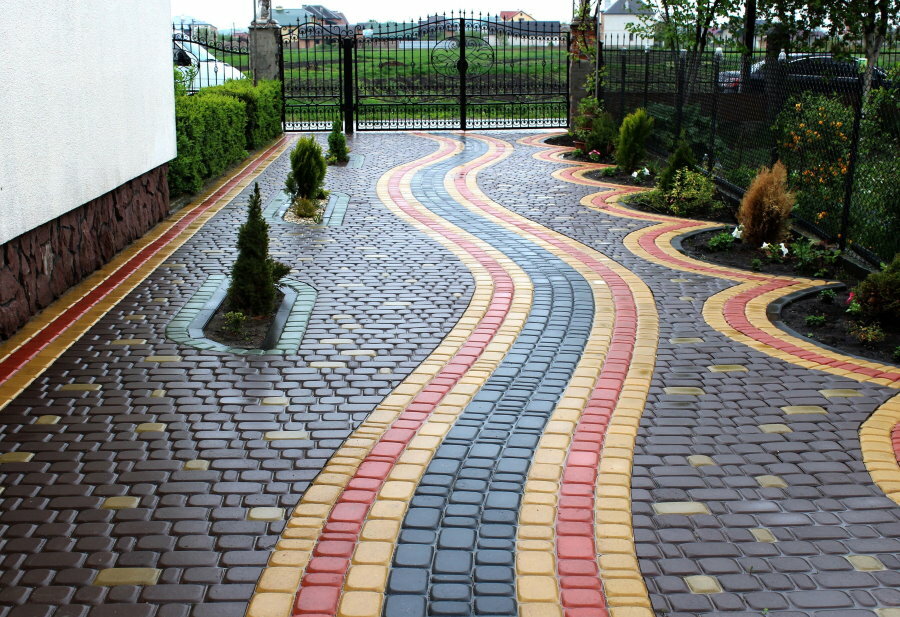
Paving slabs are very popular among owners of summer cottages and country houses
Types of paving slabs
Content
- Types of paving slabs
- Laying options for paving slabs
- Video: The process of laying paving slabs on sand
- Beautiful examples of finished sidewalks and paths in the photo
The adjacent territory is paved with type-setting elements, often used in modern landscape design, the courtyard looks neat and well-groomed.
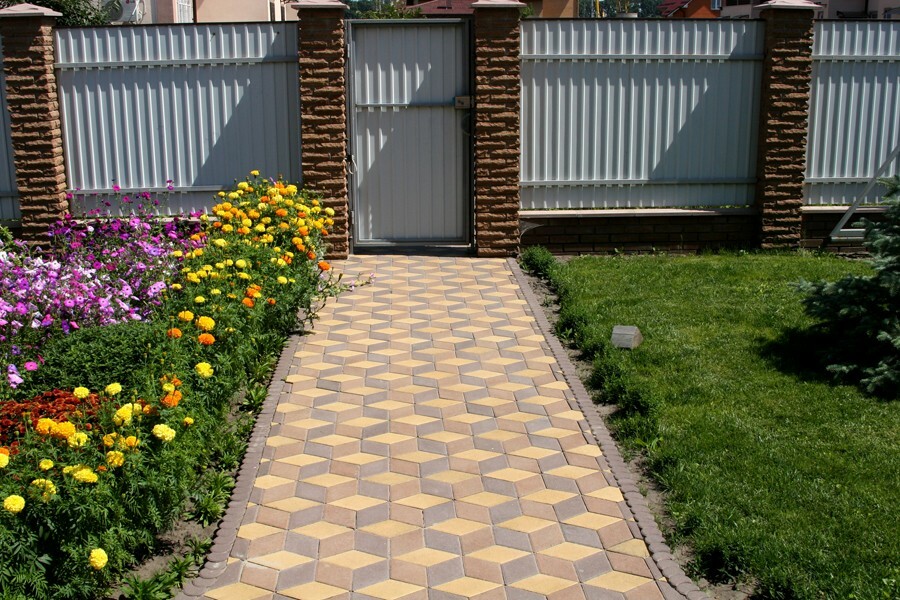
When choosing paving slabs, it is necessary to take into account the decorative and operational properties of the purchased coating.
Single-piece elements allow you to successfully fit garden paths into the common area and decorate the entire site in a single style. Tiles for the courtyard of a private house should not only carry an aesthetic component; for durable use, several parameters are taken into account when choosing.
Characteristics:
- Abrasion resistance. Ceramic coatings and cast concrete products have the best performance, but low-quality cement-based tiles will crack in severe frost. Rubber coatings are resistant to all mechanical damage, the color does not fade in the sun, they are safe when a person falls. But when the car is parked on a hot day, the coating may deform.
- Frost resistance. All types of coatings are designed for a temperature of -45 degrees, but cement-based products at such a temperature should be treated with caution. In cold winters in the region, it is worth giving preference to natural stone or rubber. Pay attention to the clinker coating - a mixture of clay and sand is fired in ovens, ceramic elements are frost-resistant.
- Product thickness. Depends on the purpose of the territory: for paths, a product with a thickness of 3-4 cm is used, for the adjacent territory used for parking a car, the thickness should be 5-7 cm.
Look at the photo when designing a courtyard with paving slabs in several sources. This will help you choose a coverage based on the size of the territory: in small areas, a coating with small fragments and not too bright in color looks better, large areas are paved with large tiles.
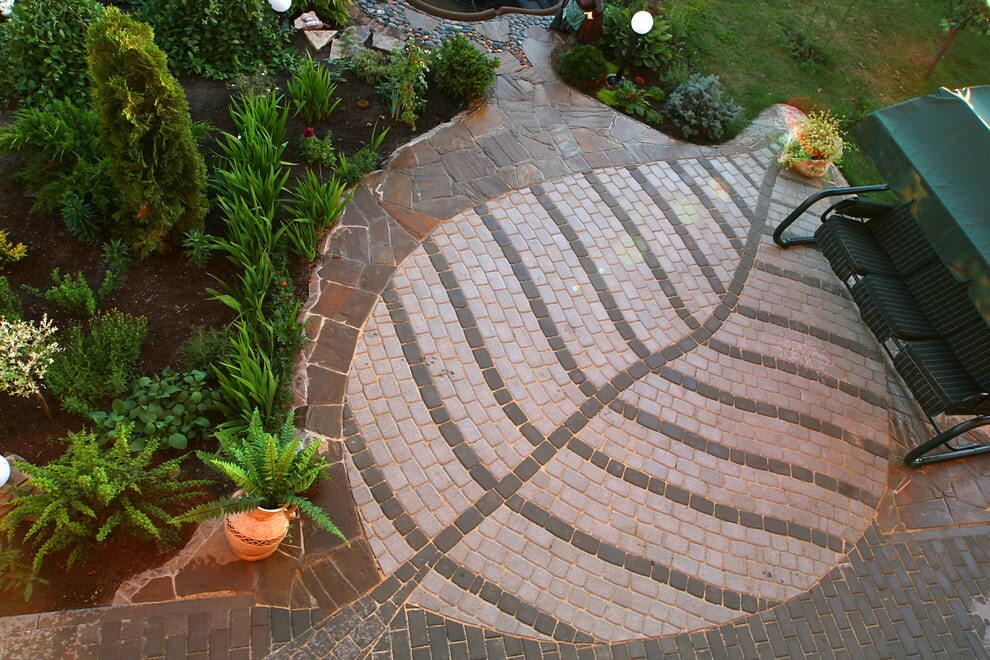
Paths and platforms, paved with various patterns, will decorate the courtyard area and create a unique landscape design of the suburban area
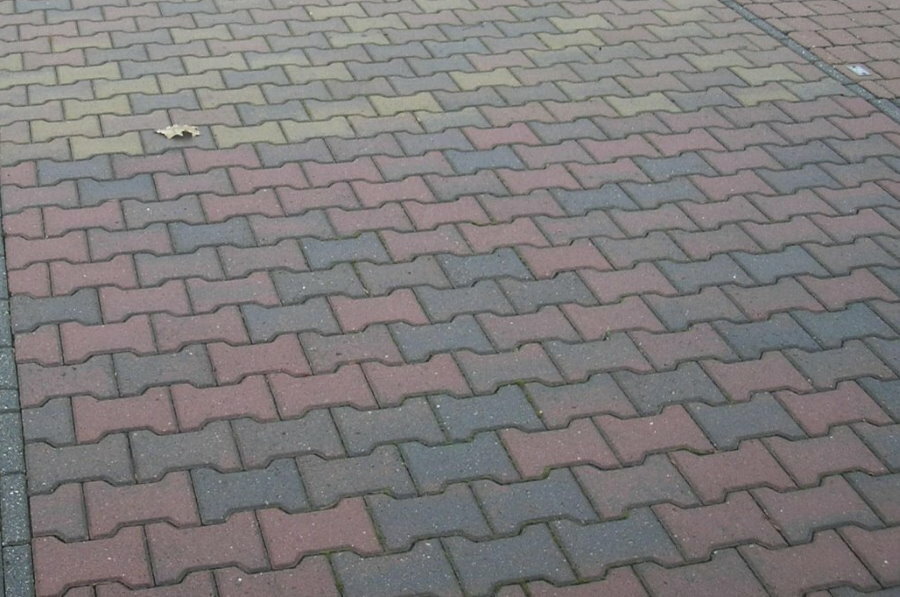
Strong engagement of paving slabs is provided by interlocking joints that prevent the products from shifting relative to each other
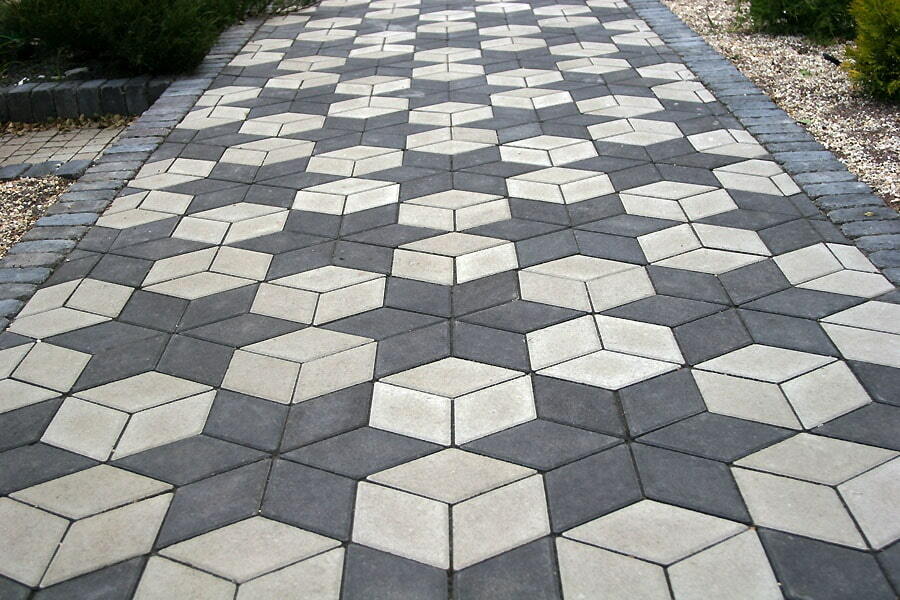
Small diamond-shaped tiles allow you to decorate the courtyard with an original three-dimensional pattern
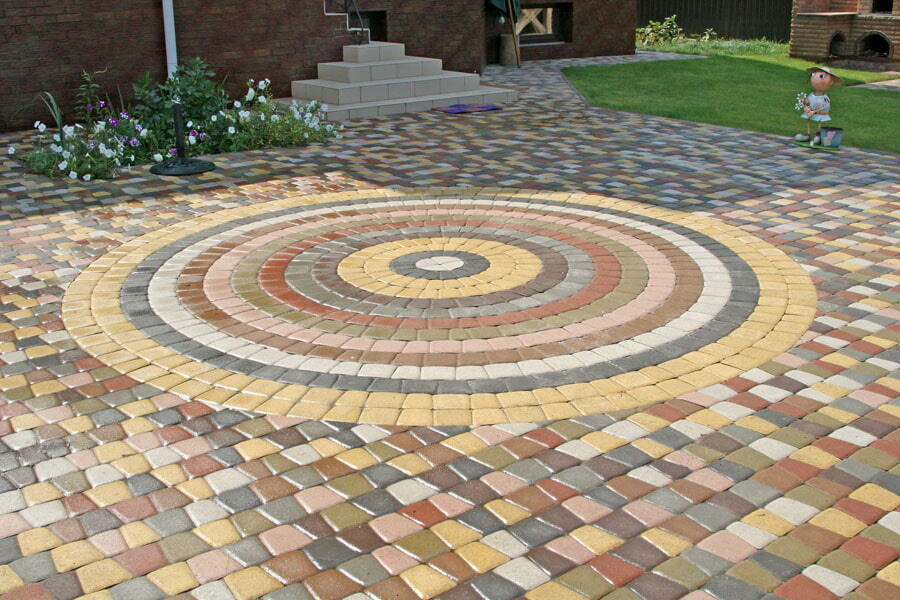
Mosaic paving slabs, due to its small format, allows you to lay out a wide variety of artistic drawings
The shape of the typesetting elements determines the stacking scheme, consumption per sq. m and the amount of waste when paving.
The main types of paving slabs:
- Clover. Has a smooth surface that stays clean in any weather. It is produced in plain color or with drawing. With a complex clover petal shape, you can combine different colors and sizes of the coating, often two colors are used.
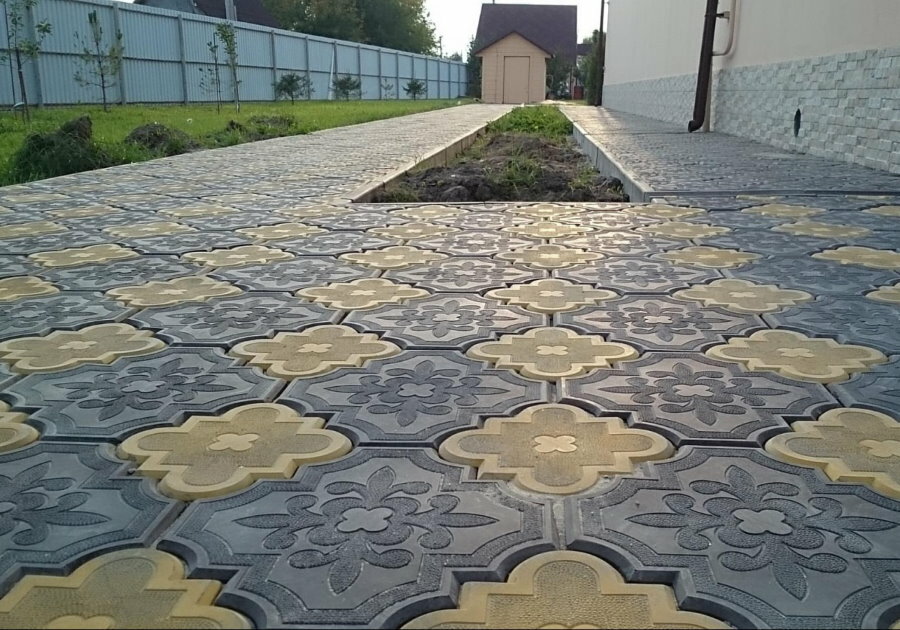
Clover tiles are squares with corners cut to fit a circle
- Wave. The complex relief does not allow the fragments to displace during long-term operation and high mechanical loads. The wave is easy to lay and is produced in a variety of colors, from which the pattern is laid out.
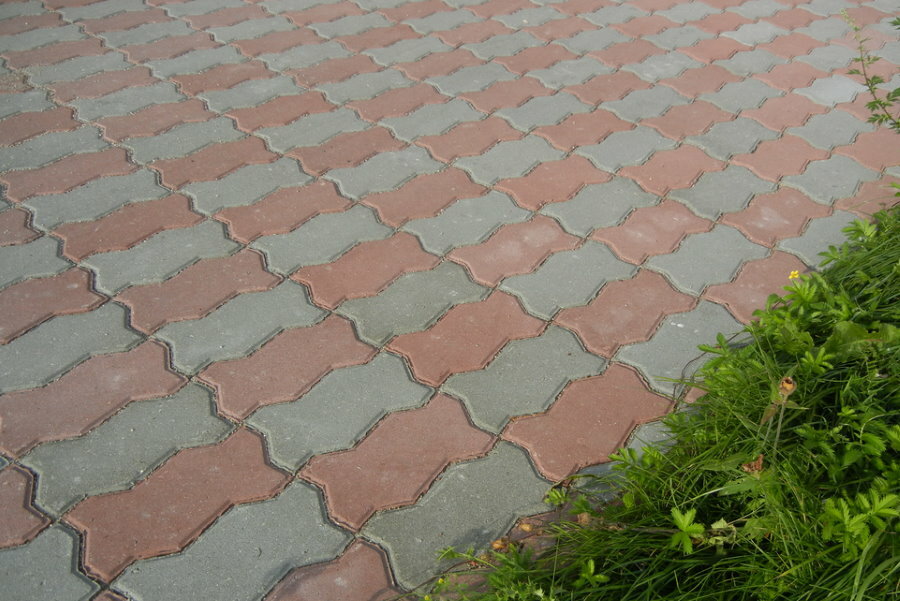
Tiles are elongated elements with bends that resemble a wave or snake
- Brick. It is produced in the form of a parallelepiped with a different surface texture, it can have a rough or smooth texture. Perfect for areas with heavy loads.
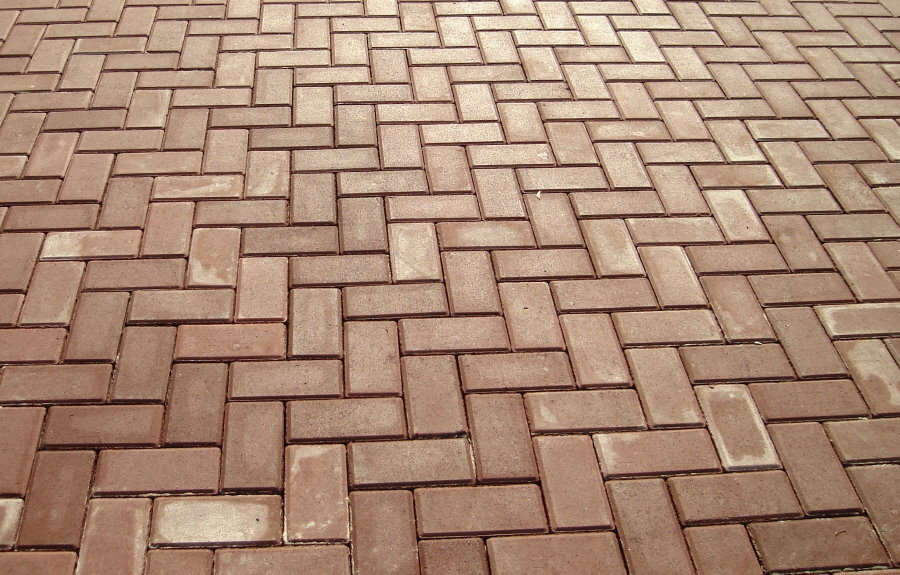
Imitation of a brick allows you to get a flat surface with a neat appearance
- English cobblestone. It looks like a natural stone of gray or brown color with smooth edges. It has a quadrangular shape with a different texture.
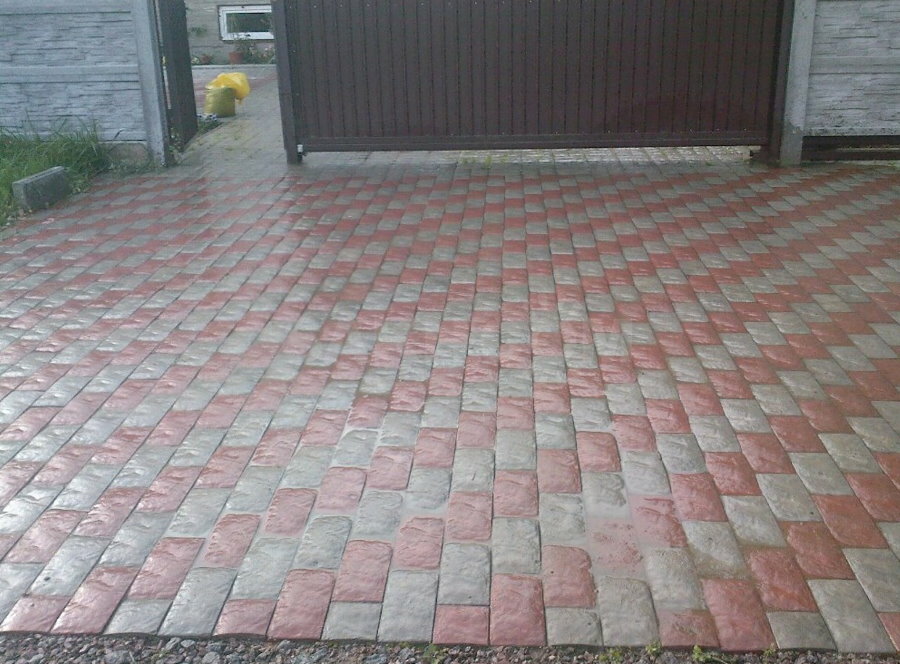
English cobblestone paving slabs are an excellent choice for imitating natural stone
- Tile. Has the shape of a square or rectangle. It is made in a different color palette and surface texture. The square can have a single surface pattern or be divided into several elements according to the texture. The alternation of squares of different sizes and colors in the design of the site looks great.

Despite their simple shapes, rectangular or square tiles allow you to create quite interesting compositions.
- Scales. It has the shape of a complex triangle, fits in two colors. By selecting three colors of "scales" with a smooth surface, a 3D effect is created.
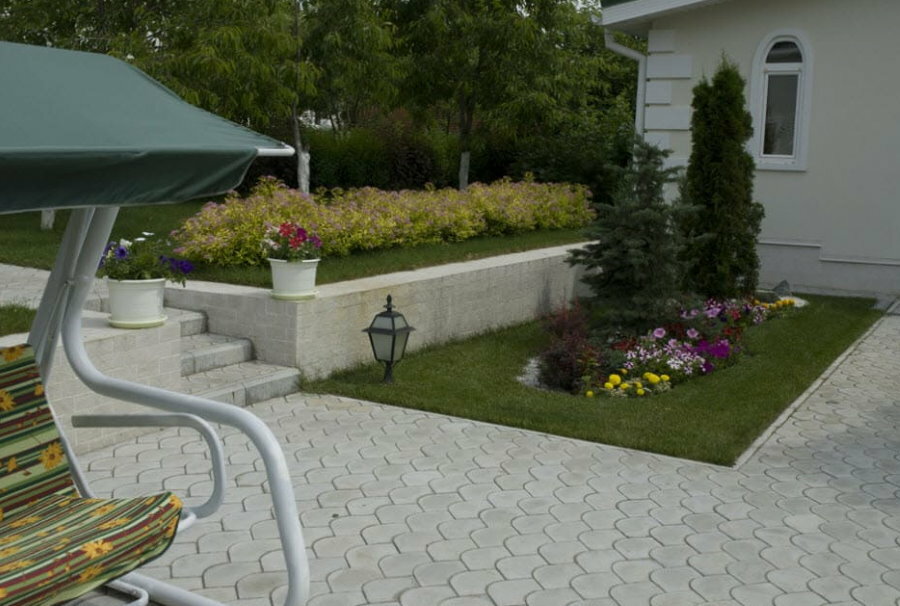
Path to the house, lined with gray paving slabs in the form of scales
The aesthetics of the coating is largely determined by the shape of the tiles in the courtyard of a private house; in the photo you can see how such paving looks like and choose your own version.
All types of coatings can have a luminous, marble or 3D effect and different colors.
Laying options for paving slabs
Before laying the covering, it is necessary to prepare the base. The surface is leveled, covered with 10-15 cm sand and compacted. The elements are laid according to the picture and hammered into the base a little. The surface must be flat, otherwise the gutters will linger in the base, and the coating will swell when the temperature drops.
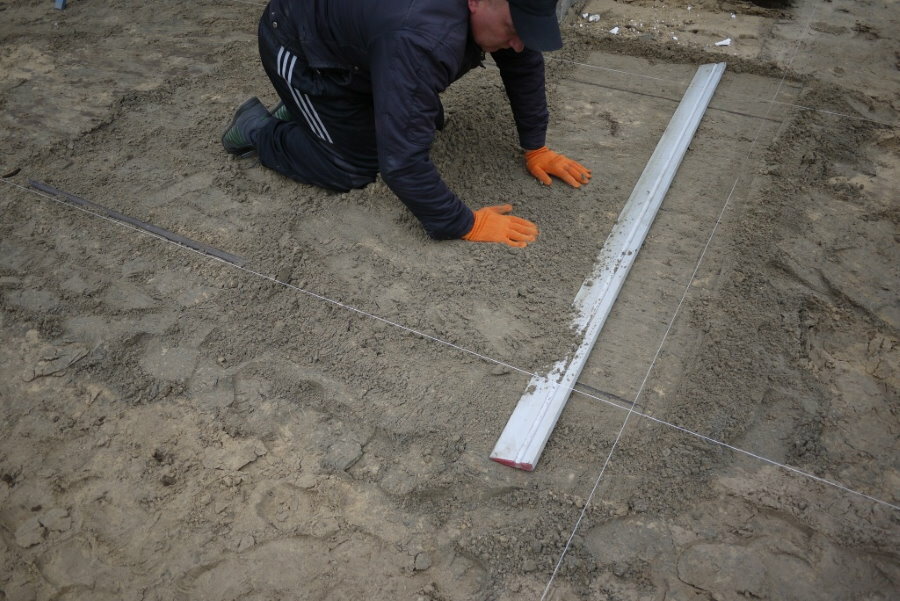
Paving slabs are laid on a tamped and leveled surface
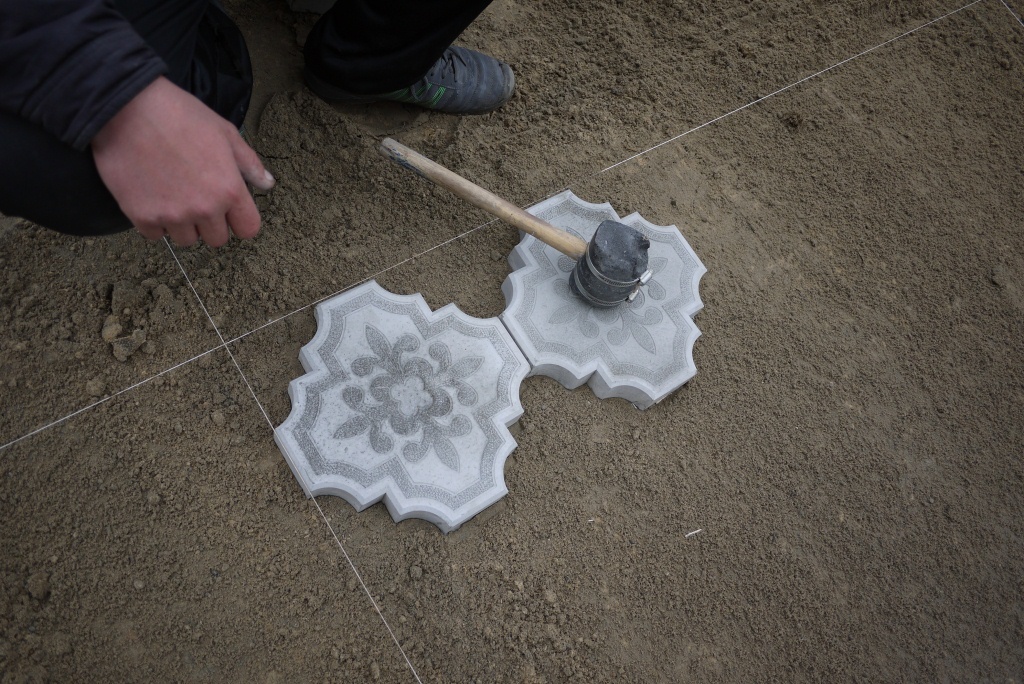
The first tiles are carefully aligned along the markup axes.

Subsequent tiles are laid, depending on the pattern, tapping each of them with a rubber hammer, leveling the plane to the level of the markings
In areas with complex soil, a 4 cm sand-cement mixture is poured and sand is laid to create a "pie" that will prevent the surface from swelling.
There are several installation options for most tile modifications. Look at the photo of the paving stone paths in landscape design, by combining colors you can create a unique pattern in the courtyard of the house.
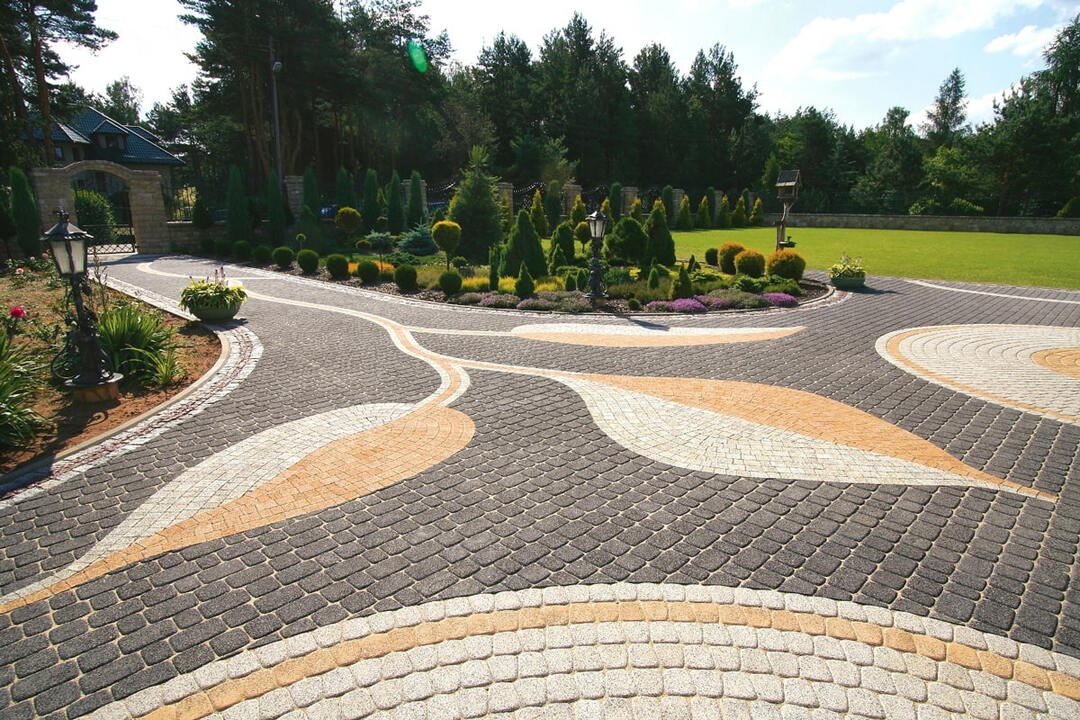
There are many options for laying tiles, with which it is possible to create aesthetic compositions.
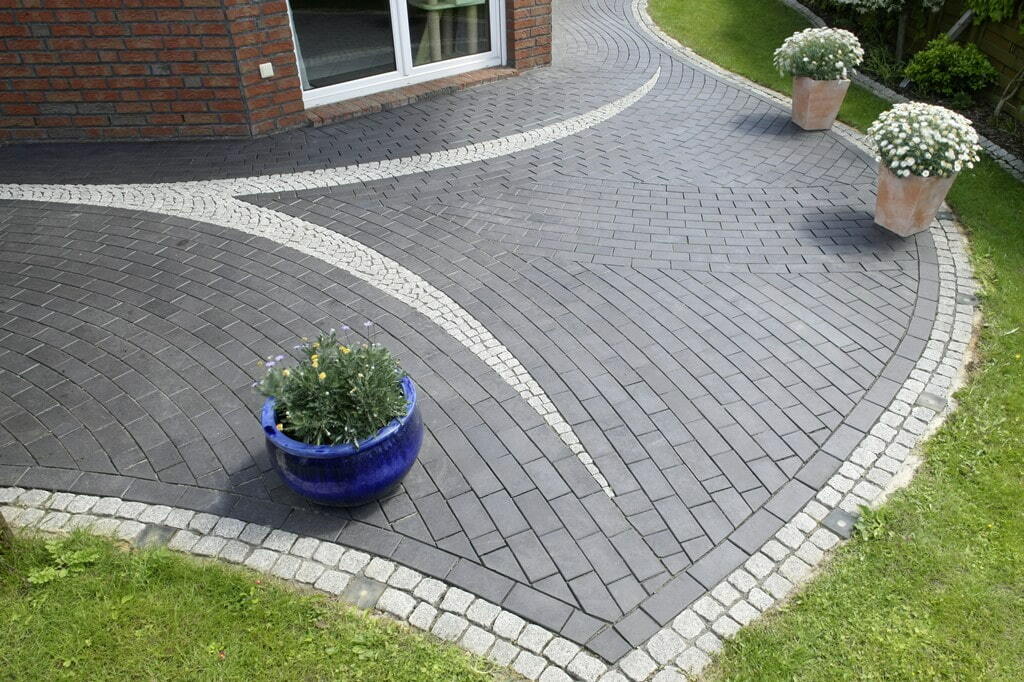
By choosing the color scheme of the tiles, it turns out to achieve the original appearance of the courtyard covering
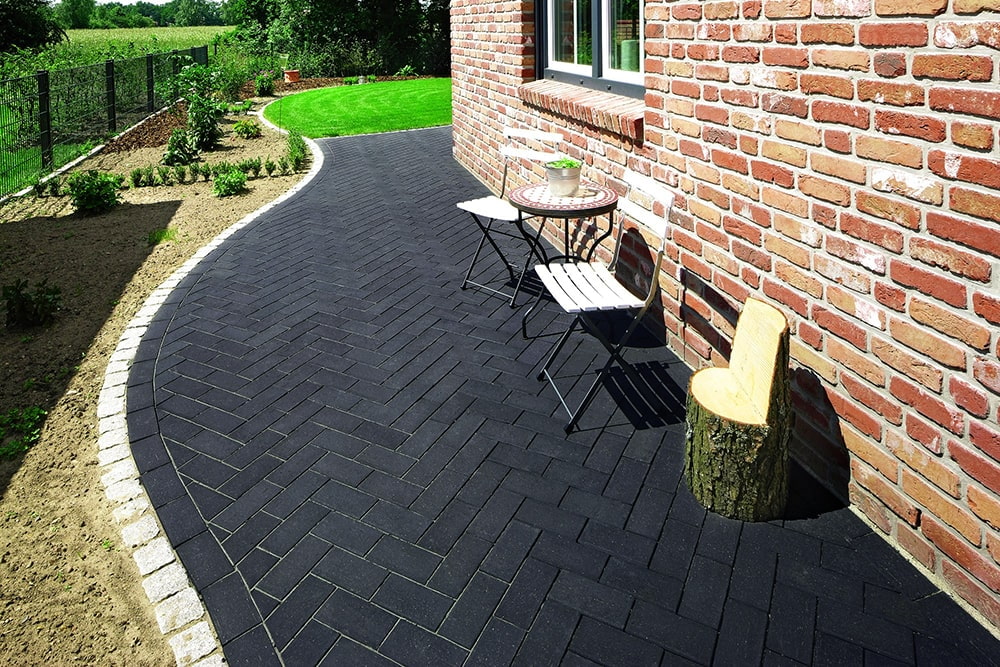
Paving slabs of rich tone allow to emphasize the architectural advantages favorably.
Monochrome styling will give the territory a noble look, multi-colored will add brightness and originality. The color palette is rich, yellow, green, gray and brown colors are especially relevant in landscape design.
The main thing is when combining different tiles to create a composition: the shape, color and texture may differ, but the thickness should be the same.
Styling options:
- Zigzag. The easiest way, which is done with a brick or a wave. Elements are laid in a multi-colored zigzag along the site. In simple styling, stripes play with color and different surface textures.
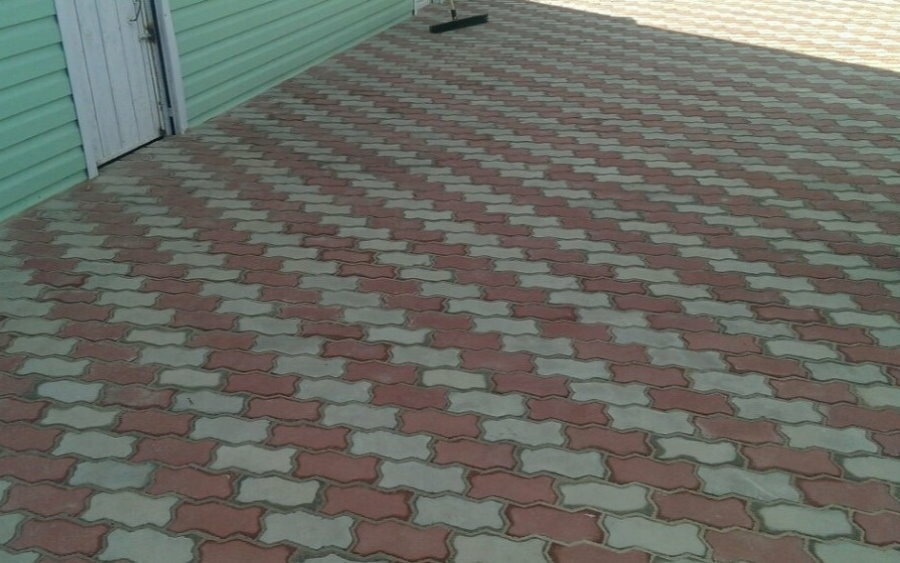
Using paving slabs of different colors, you can create interesting patterns
- Herringbone and braid. Created with rectangular or trapezoidal elements and laid at an angle of 90 or 45 degrees. A “herringbone” is laid along the paths, and in large areas it can radiate from the center in two colors. With the help of the Christmas tree, you can visually stretch the territory and give a feeling of boundlessness.
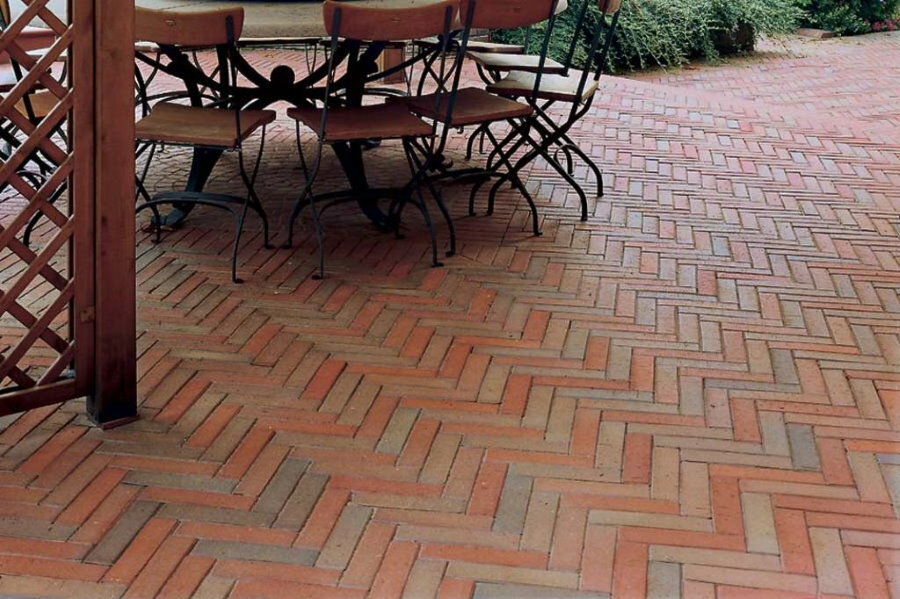
Herringbone laying looks harmonious using tiles of different tones
- A random mix. Will look good in any kind of paving slabs. To create a chaotic order in the installation, you need to choose tiles in 4-5 colors, perhaps in different textures, and connect your imagination. The color palette of the coating is combined with the design of the house. The multi-color blend looks great on large areas and narrow garden paths.
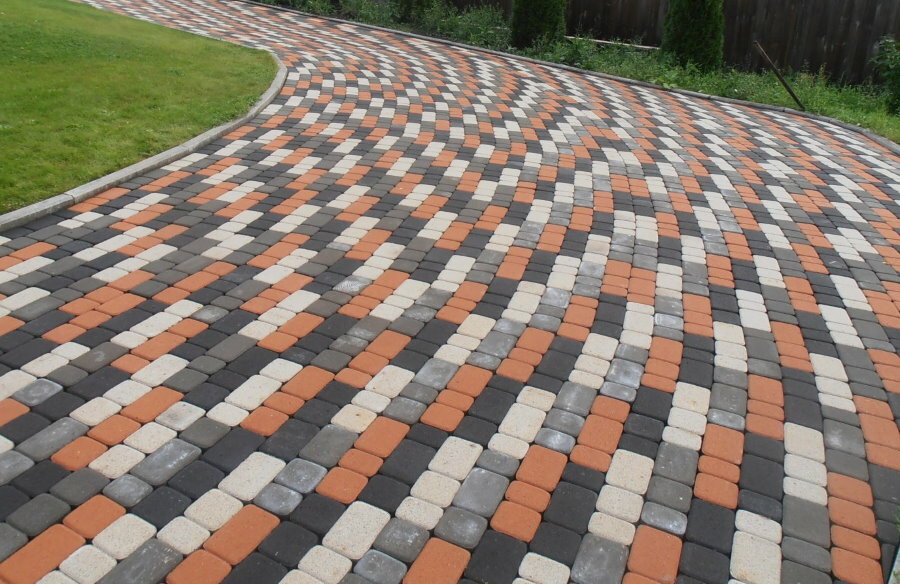
Laying tiles in random order looks especially advantageous when using products of different colors
When laying in a zigzag or herringbone pattern, the difficulty arises when installing borders along the edges, it is necessary to purchase additional elements in the form of a triangle.
Pay attention to the compositions in the kit, including complex shapes, circles, squares and rhombuses, which, when laid, create a variety of patterns and ornaments.
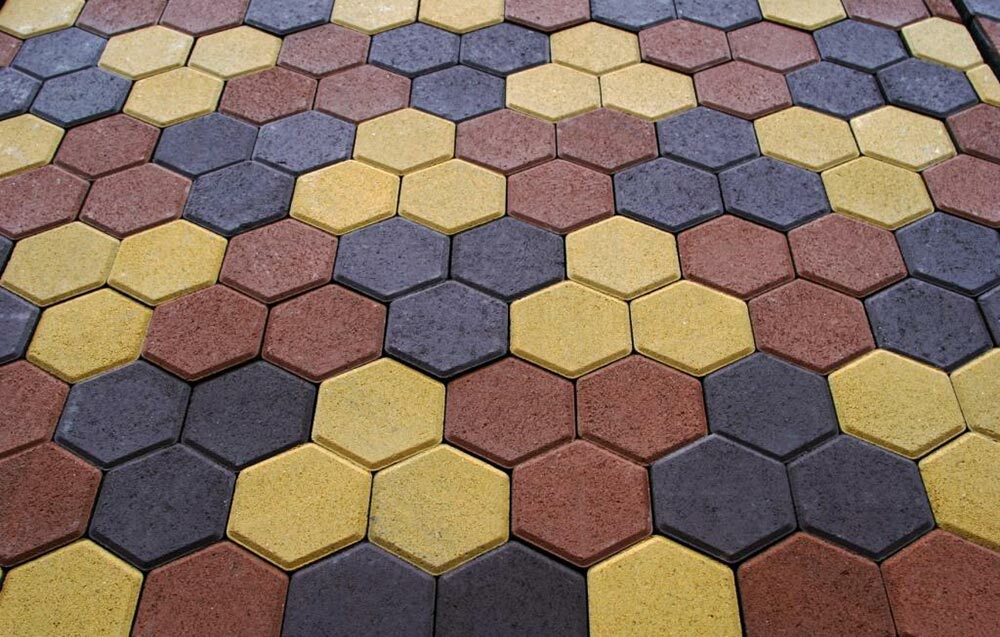
Hexagon-shaped tiles look very attractive and can have any layout
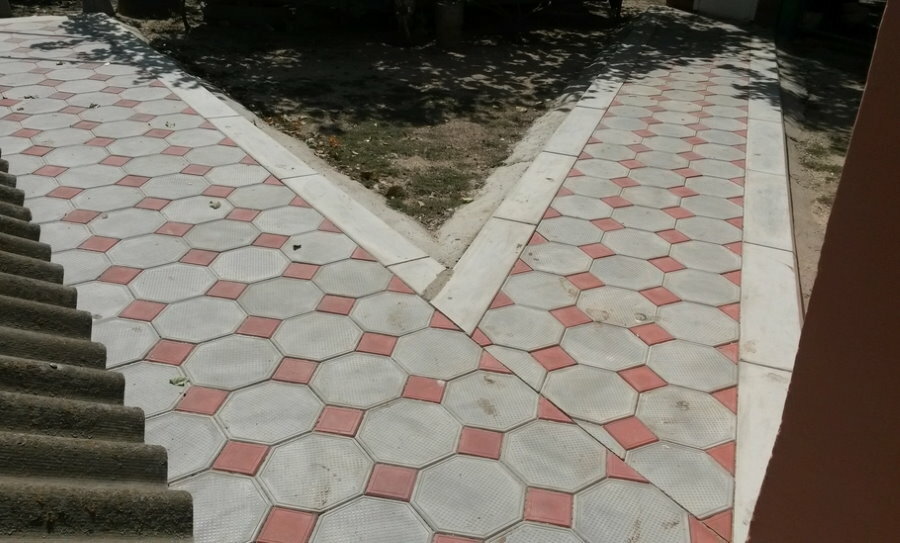
Tiles in the shape of an octahedron are distinguished by an exquisite pattern, which, when laid out, are combined with square products of a smaller format
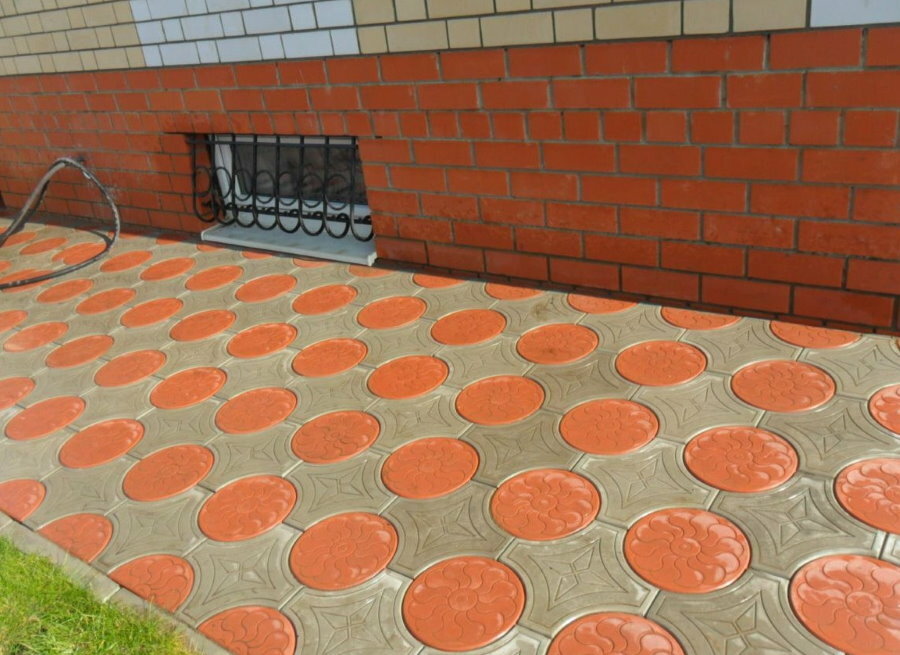
Round tiles look very aesthetically pleasing and original, combined when laying with octagonal products with semicircular cutouts
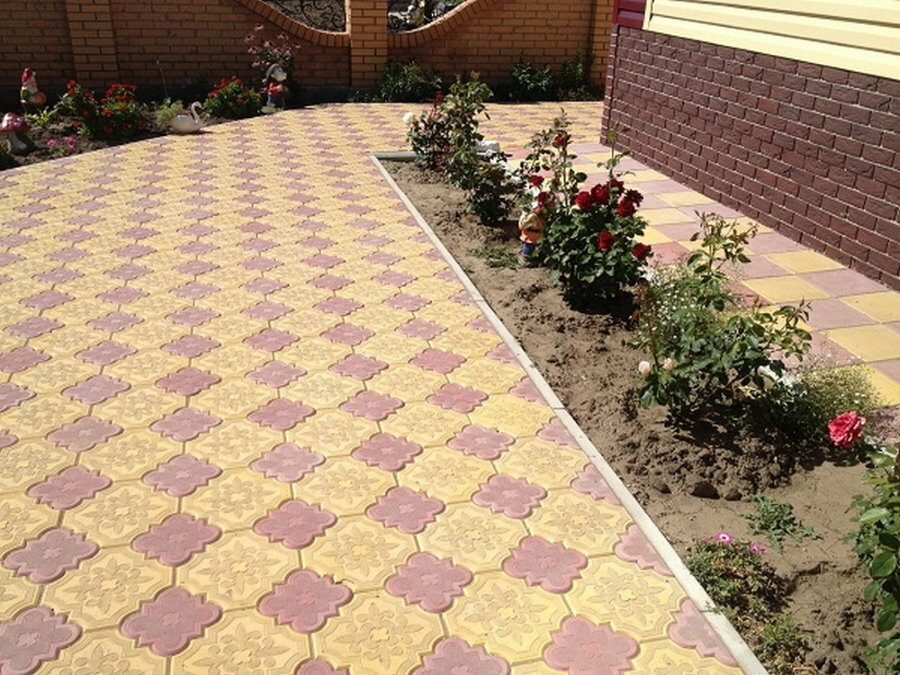
The “Daisy” tile has a bizarre configuration, allowing you to lay out interesting compositions
Combining several types of elements, you can create a unique ornament and a masterpiece of landscape design on the site.
Video: The process of laying paving slabs on sand
Beautiful examples of finished sidewalks and paths in the photo



